Flower foray at Stover
Nature reserves have a habit of bringing out the best and worst in me. There are times when I soak up the peace and tranquility. And there are other times when I find it hard not to adopt the mentality of a big kid in a sweet shop; wanting to dash everywhere and search for everything at once.
We are hardly out of the car park when I find an information board to set my pulse racing. There are Bee Orchids at Stover, or so it claims. And there is the photographic evidence on the board to prove it! Armed with this information, we deviate from the main walk around the lake. My eyes are scanning the ground more feverishly than someone who's dropped their wallet. I have tunnel vision and that can only mean one thing: missing everything else. Behind me, Sherry has a clear head and does not let the bigger picture pass her by.
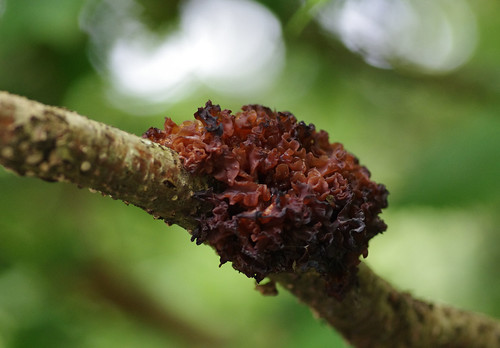
Leafy Brain Fungus (Tremella foliasa)
I walked straight past this without noticing it. A new species of fungi on a hazel branch - and captured with a wonderful light, to boot.
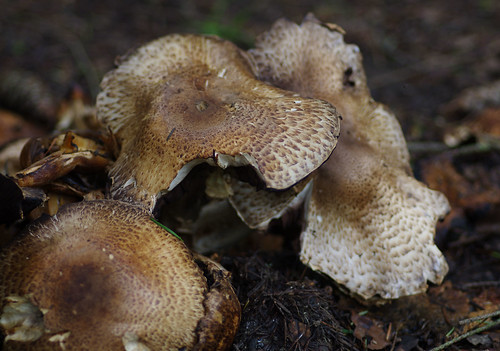
Possibly Blushing Wood Mushroom (Agaricus sylvaticus)
These were on the ground, slightly away from the main path. I did notice a couple of helleborines not yet in flower but was unable to identify which species they were.
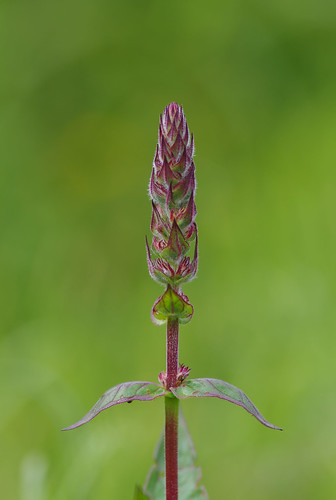
With its red stalk and red-tinged leaves, I had no idea what wild flower this was. It was only later, when we saw self-heals that the penny dropped and I made the connection. This had to be self-heal prior to flowering.
We followed a damp, grassy path with a stream on our left. Common Valerian stood proud and tall and there was also an unusual woundwort. The flowers looked very similar to the Hedge Woundwort we often see. But the leaves were different, being more downy.
No matter how many times you refer to field guides, books are no substitute to being in the company of someone who knows their subject and is eager to share the knowledge they have acquired. We were lucky enough to have the benefit of John Cowling's help on this walk. Watching John, on his hands and knees, smelling the flowers, I realised I had missed a simple but effective aid to identification. I will be using my nose as keenly as a bloodhound from now on to search for answers.
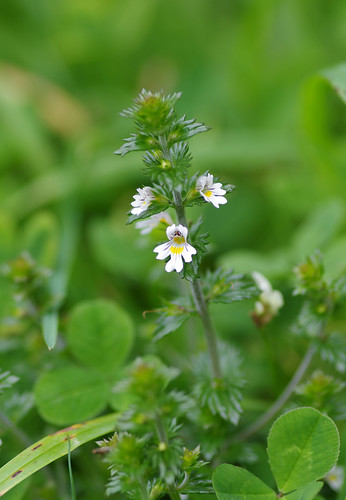
Eyebright (Euphrasia nemerosa) ssp. anglica
With some flowers, identification can prove too much of a hassle. When it comes to eyebrights, I would rather look at and appreciate them than immerse myself in a bewildering key. Historically they were used medicinally to improve eyesight (hence the name.) Recent research has concluded what was previously thought of as one species now has three subspecies - each more or less confined to a different area of the country.
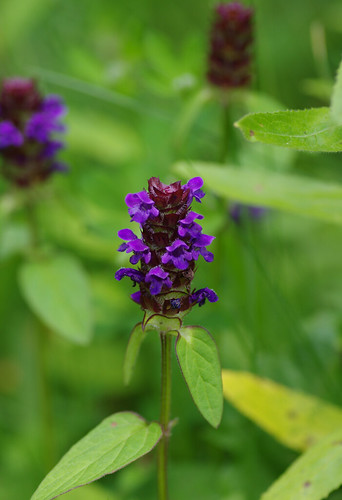
Self-heal (Prunella vulgaris)
Among the predominanace of greens, these self-heals really stood out.
We had retraced our steps and were walking along a straight track with pylons overhanging nearby. We passed fleabanes and common centauries. It looked like the sort of sandy lowland heat where you might hear nightjars on a blamy summer's evening.
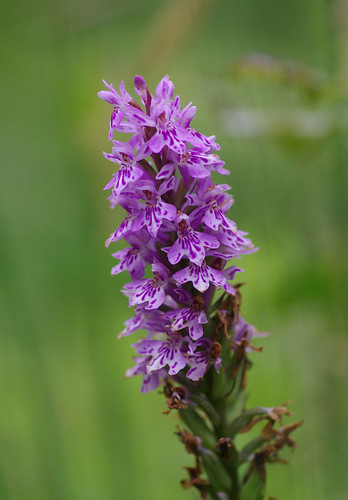
Common Spotted-Orchid (Dactylorhiza fuchsii)
Most of the orchids we saw were past their best. And there was no sign of those pesky, elusive bee-patterned flowers, either.
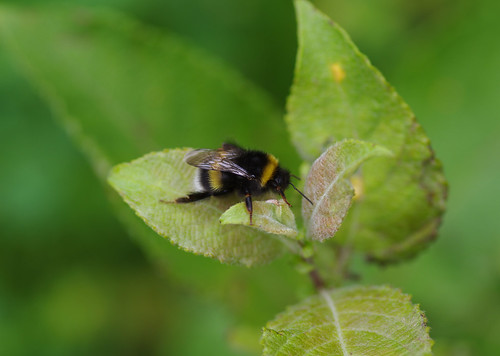
Buff-tailed Bumble-Bee (Bombus terrestris)
But why go looking for patterns when you can see the real thing?
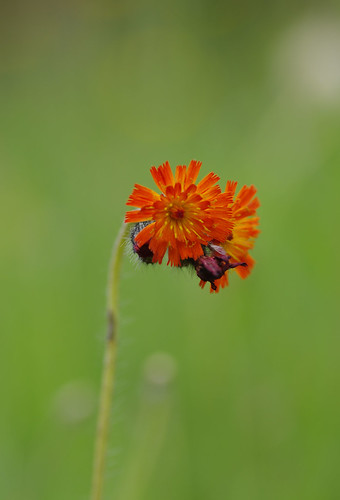
Fox-and-cubs (Pilosella aurantica)
These orange flowers were further along the track. Luckily, there was only a light breeze and Sherry was able to capture the colours nicely.
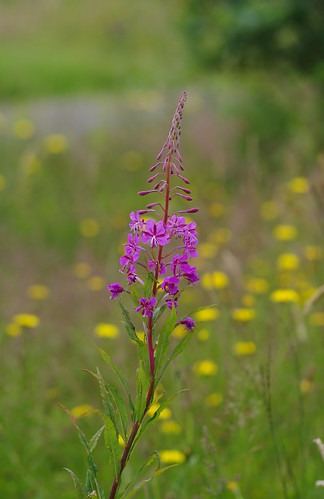
Rosebay Willowherb (Chamerion angustifolium)
There is no need to smell these flowers. They have an overpowering sweet scent and seem to have spread in recent years. The pink flowers attract pollinators but perhaps even more than this, Rosebay Willowherbs are extraordinarily gifted when it comes to seed dispersal.
I went on to the end of the track and turned back, having seen no Bee Orchids. I think we will have to postpone our search and wait till next year now. Halfway back along the track, we turned left and headed back towards the lake. Stover has much to recommend it, including a Ted Hughed Poetry Trail. There were a couple of Hughes's poems along the track and I paused to read and digest them. Being outdoors is perfect for poetry. While I was reading I found myself listening. And while I was listening, I was more receptive and better able to come to terms with the levels of meaning in the poems.
With grateful thanks to John and Lizzie Cowling for their company and expertise on this walk.
STOVER COUNTRY PARK
As well as the Pay and Display Car Park, there are toilets, a visitor centre and lots of activities for families throughout the year.
For further information please click on the link below.
http://www.devon.gov.uk/stover_country_park

Comments
Add a Comment